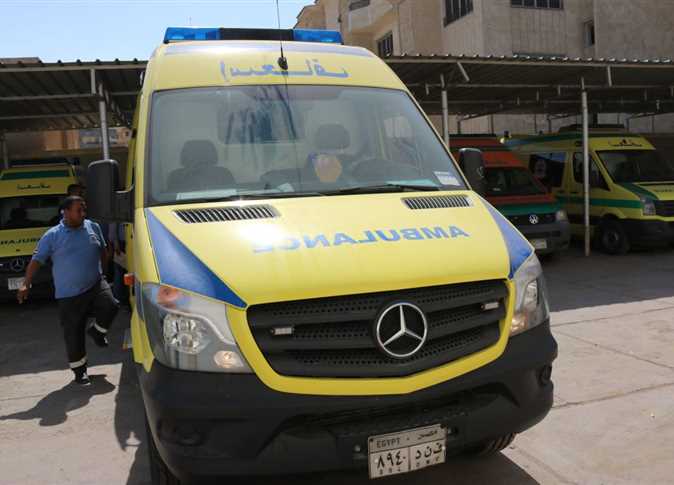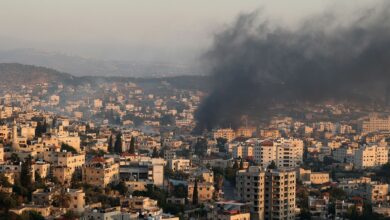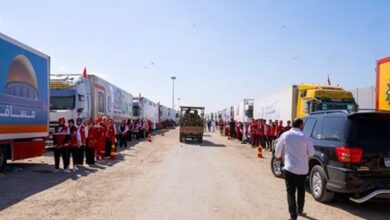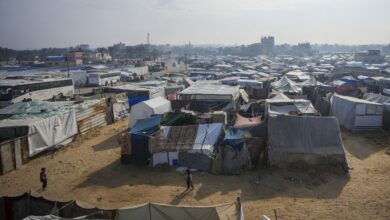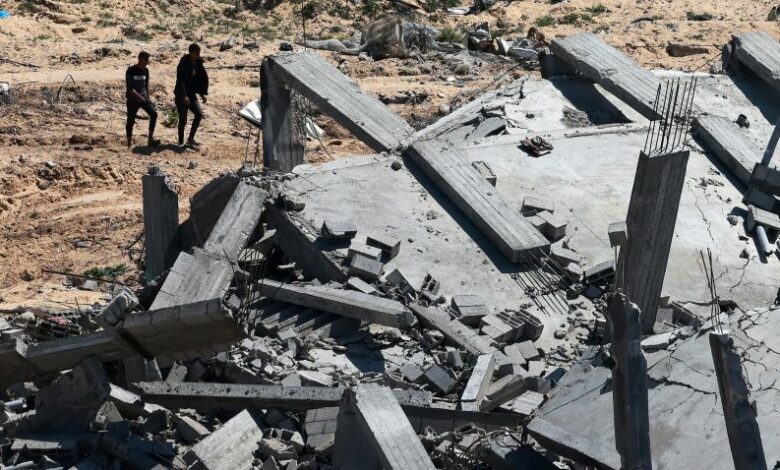
The Israeli military said it has withdrawn its ground forces from Khan Younis in southern Gaza after months of fierce fighting.
The Israel Defense Forces (IDF) said on Sunday that its 98th division had “concluded its mission” in Khan Younis. The division was leaving the Gaza Strip to “recuperate and prepare for future operations.”
The IDF added that “a significant force led by the 162nd division and the Nahal brigade continues to operate in the Gaza strip, and will preserve the IDF’s freedom of action and its ability to conduct precise intelligence based operations.”
A CNN team along the border where troops enter and leave Gaza has not yet seen large numbers of troops withdraw, but it has seen a large number of tanks pull out of Khan Younis overnight. They are now stationed on the border of Gaza and Israel.
An Israeli brigade typically has roughly a few thousand troops, but it remains unclear precisely how many Israeli troops have withdrawn from Gaza.
As of January, the 98th division was the military’s biggest-ever division, as it was specifically bolstered to fight Hamas in Khan Younis.
IDF Lt. Gen. Herzi Halevi said at a news conference Sunday the military is “far from stopping” its operations in the Gaza Strip following the withdrawal.
“We will not leave any Hamas brigades active – in any part of the Gaza Strip. We have plans and will act when we decide,” he said, adding that the military’s goals in Gaza have not been fully achieved, including the return of all hostages, the return of displaced residents to the north and the dismantling of Hamas throughout Gaza.
In response to a question about the effect of the military’s withdrawal of ground forces from Khan Younis in southern Gaza, Halevi said, “the military wing of Hamas is deterred, the vast majority of its battalions are dismantled and lost their capabilities. That military framework, which had many capabilities, is currently running as small terrorist cells.”
Halevi reiterated that the IDF has not left the Gaza Strip and that there are “many troops at this very hour” in the strip.
“This is a long war; we can’t maintain the same (extent of) troop deployment,” he said, adding, “many achievements are yet to come on our way to the victory.”
It’s unclear what the withdrawal means for Israel’s plans to invade Rafah, the southernmost part of Gaza that has become a shelter for hundreds of thousands of Palestinians. Israel has said an incursion into Rafah is essential to achieve its goal of eliminating Hamas from Gaza.
Israeli Defense Minister Yoav Gallant said Sunday that the troops were leaving Gaza to prepare for follow-up missions, including in the Rafah region.
“The troops exit and prepare ahead of their follow-up missions. We saw examples of such missions in action in Shifa. And also for their follow-up mission in the Rafah region,” Gallant said in remarks during his visit to the military’s Southern Command.
“We are reaching a situation where Hamas does not control the Gaza Strip and that it does not function as a military framework that poses a risk to the citizens of the State of Israel,” Gallant said, noting that he has completed a situational assessment of the IDF Southern Command as its forces are pulling out of Khan Younis.
The defense minister added that Israeli forces in Khan Younis were successful in destroying “enemy targets, warehouses, weapons, underground [infrastructure], headquarters [and] communication rooms.”
Israeli public broadcaster and CNN affiliate Channel 11 on Sunday reported that the remaining forces would be located along the so-called Netzarim Corridor, a route that splits the Gaza Strip in two. Named after the former Israeli settlement of Netzarim in Gaza, the corridor intersects one of Gaza’s two main north-south roads, Salaheddin Street, to create a strategic, central junction.
Before pulling out, the IDF on Sunday said that commando units had raided and searched more than a hundred locations in the Al-Amal neighborhood of Khan Younis, where it found a long tunnel and “eliminated terrorists.” CNN cannot independently verify those claims.
Speaking to ABC’s “The Week,” White House National Security Communications Adviser John Kirby said it was unlikely the move was sign of some incoming new operation but rather a “rest and refit.”
“They’ve been on the ground for four months. The word we’re getting is they’re tired, they need to be refit.”
The US is Israel’s major ally but has been pressuring the country to do more to protect civilians and allow in aid.
In a call this week between US President Joe Biden and Israeli Prime Minister Benjamin Netanyahu, Biden told Netanyahu to take steps to address the crisis or face consequences.


The IDF began its campaign against Hamas in Gaza’s north soon after the October 7 attacks that killed about 1,200 people. Early in the war, the Israeli military designated Khan Younis as a safer zone and told residents from northern Gaza to seek shelter there.
But as the IDF increasingly switched its focus to the south, the city became a battleground.
On December 1, the Israeli military launched a massive air raid operation on Khan Younis, dropping leaflets into the city telling residents to immediately evacuate.
Since then, it has been a site of intense fighting, leaving the area devastated. Visiting the scene earlier in the year, CNN found buildings completely destroyed or others beyond repair.
The IDF says the city is a Hamas stronghold, adding that the tunnel network underneath civilian buildings in the city was likely where Hamas planned the October 7 attacks from. The city is the hometown of Hamas’ leader in Gaza, Yahya Sinwar.
Hamas has denied hiding in hospitals and other civilian structures and CNN cannot independently verify either claim.
This story has been updated with additional developments.

